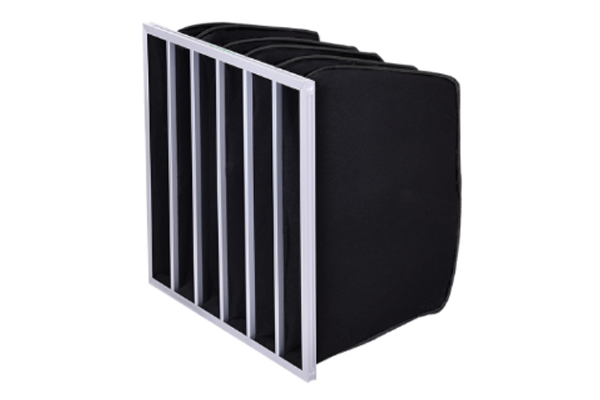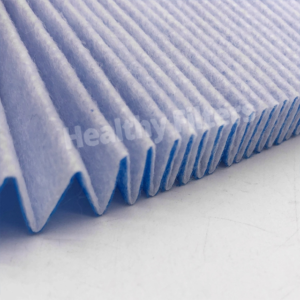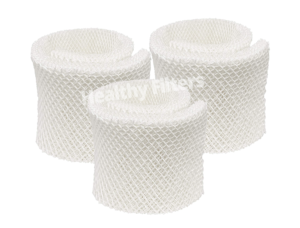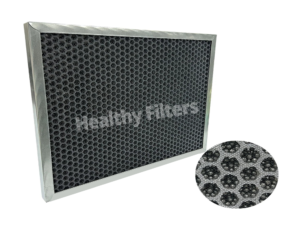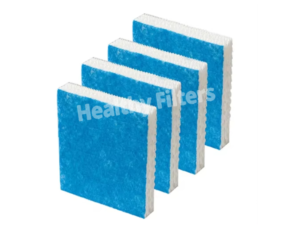Activated carbon bag filter is an air purification device that combines physical interception and chemical adsorption mechanisms. It is designed to remove particulate matter (such as dust, paint mist) and gaseous pollutants (such as VOCs, odor, formaldehyde) at the same time. It adopts a bag-type (Pocket) multi-fold structure with a built-in activated carbon layer. It is widely used in the coating, chemical, medical and food industries to achieve a balance between efficient purification and energy saving and consumption reduction.
Core structure and technical characteristics
Multi-layer composite design
Pre-filter layer: anti-static polyester fiber non-woven fabric, intercepts ≥5μm particles (such as paint mist, dust), has a dust holding capacity of 500-1000g/m², and extends the life of the activated carbon layer.
Activated carbon layer:
Particle carbon filling: high iodine coconut shell activated carbon (iodine value ≥ 1000mg/g), adsorbs VOCs such as benzene and formaldehyde;
Impregnated carbon fiber: add chemical catalyst (such as KMnO₄) to specifically decompose malodorous gases such as hydrogen sulfide and ammonia.
Support structure: galvanized steel or flame-retardant PP frame, temperature resistance -20℃ to 80℃, edge silicone seal to ensure airtightness.
Performance parameters
Particle filtration: in accordance with EN 779 G4-F7 standard (PM10 filtration efficiency ≥ 70%-90%);
Gas adsorption: VOCs removal rate ≥ 85% (toluene test), formaldehyde adsorption ≥ 200mg/g;
Airflow resistance: initial pressure difference ≤ 120Pa, energy consumption is 20%-30% lower than traditional activated carbon filter element.
Core advantages
Advantage dimensions Specific performance User value
Dual purification Single-stage filter element simultaneously intercepts particles and adsorbs gaseous pollutants Simplified system design, saving installation space and maintenance costs
Long-term economy Pre-filter layer protects activated carbon, and the replacement cycle is extended to 6-12 months Comprehensive operating costs are reduced by more than 40%
Safe and environmentally friendly Flame-retardant frame (UL94 V-0) and food-grade activated carbon, no secondary pollution Compliant with OSHA, FDA and green building certification (LEED)
Flexible adaptation Supports customized carbon layer thickness (20-100mm) and number of filter bags (6-36 bags) Adaptable air volume range 1,000-30,000m³/h
Typical application scenarios
Coating industry:
Automobile spray paint room, intercepts overspray mist and adsorbs solvent volatiles such as benzene and xylene;
Industrial spray line, protects RTO/RCO equipment, and reduces VOCs processing load.
Chemical and pharmaceutical:
Reactor exhaust system, adsorbing acidic gases (HCl, Cl₂) and organic solvents;
API workshop, controlling dust and odor, meeting GMP clean standards.
Commercial and medical:
Laboratory fume hood, capturing chemical volatile gases and particles;
Catering kitchen, filtering oil smoke and food odor, improving air quality.
Environmental management:
Garbage transfer station deodorization system, decomposing odor molecules such as hydrogen sulfide and ammonia;
Waste gas purification in aeration tanks of sewage treatment plants, reducing surrounding environmental pollution.
Selection and maintenance guide
Selection key parameters
Pollution type:
Mixed pollution (particles + VOCs): select composite pre-filtration + high iodine value activated carbon;
Corrosive gas: select chemical impregnated carbon layer (such as KMnO₄, KI).
Air volume adaptation: Calculate the number of filter bags according to the ventilation frequency (such as 15,000m³/h requires 18-24 bags), wind speed ≤2.0m/s.
Maintenance strategy
Pressure difference monitoring: The recommended replacement threshold is initial pressure difference × 2.5 (usually ≤300Pa);
Regeneration treatment: Industrial-grade filter elements can recover 50% adsorption performance by high-temperature desorption (200-300℃) and can be reused 3-5 times;
Replacement standard:
Activated carbon saturation (downstream gas concentration exceeds the standard);
Pre-filter layer is damaged or seriously blocked.
Industry innovation and trend
Intelligent perception: Built-in gas sensor, real-time monitoring of VOCs concentration and linkage fan speed regulation;
Modular design: Quick-detachable filter bag and activated carbon box, replacement within 5 minutes, reducing downtime losses;
Carbon neutralization integration: The proportion of bio-based activated carbon (bamboo charcoal, fruit shell charcoal) has increased to 50%, and the carbon footprint has been reduced by 35%.
The activated carbon bag filter takes **”efficient purification, intelligent operation and maintenance, economic and environmental protection”** as its core value, and has become a benchmark solution for the coordinated governance of multiple pollutants. From workshops to laboratories, it not only protects air health, but also promotes industrial green transformation with technological innovation.

